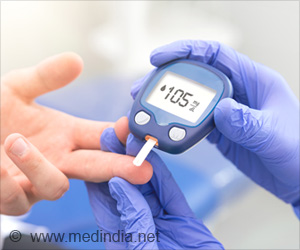
Indian connection to diabetes is deeply rooted, as ancient texts offer accurate depictions of the ailment referred to as “madhumeha.”
#indians, #diabetes, #ancienttexts
’
India was where crystalline cane sugar was first used. In 327 BCE, Nearchus, a general in Alexander’s army, wrote: ‘There is a reed in India that brings forth honey without the help of bees, from which an intoxicating drink is made, though the plant bears no fruit.’
Advertisement
Alexander’s army carried back, among other things, sharkara (gravel in Sanskrit) from India. The words shakkar and sugar are derived from the Sanskrit sharkara (1✔ ✔Trusted Source
How India became world’s diabetes capital; what we can do about it ).
Modern India is facing a major health threat due to diabetes, with the last three decades witnessing a massive increase in numbers, almost in parallel with our economic growth.
At last count, India had 101 million people with diabetes, with another 136 million classified as pre-diabetic.In metros like Delhi and Chennai, it is estimated that two-thirds of the population has either diabetes or pre-diabetes by the age of 60.
Antiquity of Madhumeha
Diabetes is not just blood sugar – over some time it can affect the heart, kidney, liver, eyes feet, and many other parts of the body. Managing these complications can take a heavy toll on the individual, family, society, and country.
The focus for India, therefore, has to be on prevention of diabetes and its complications. The recently concluded ICMR-INDIAB study was conducted in 31 states and Union Territories of India and involved more than 113,000 subjects.
Advertisement
There are significant urban rural and regional differences in diabetes prevalence in India. Our metros have a greater prevalence than smaller cities, which in turn are more severely affected than villages.
However, of late, there has been a sharp increase in rural areas too, which is linked to changes in eating habits.
Advertisement
Central and northeastern regions of the country have lower prevalence as compared to the southern and western regions, with Goa showing the highest prevalence of all. Why is India facing this surge in diabetes?
Long-Standing Relationship with Diabetes
Genetic programming:
Our genes have not changed, so blaming genetic predisposition as the chief reason does not stand to reason. However, centuries of malnutrition, and undernutrition in the intrauterine period programs our body to store energy as fat as soon as we are exposed to energy-dense food.
This fat accumulation around the abdomen and viscera leads to metabolic consequences and Indians develop diabetes and heart disease at much lower body weights than western Caucasians. Indians tend to have greater insulin resistance, as well as greater insulin deficiency. Overall better nutrition and better health of pregnant women have to be a vital component of our strategy to combat diabetes.
Dietary changes:
Increasing urbanization and affluence have led to major changes in our dietary habits. The most important factor responsible for the rise in diabetes is the increase in refined carbohydrate intake. Our daily cereals and staple are maida/ refined flour/ shiny white rice, all of which are devoid of husk or bran and therefore have little fiber.
India has always been a carbohydrate consuming country but the quality of our carbohydrates has changed in the last few decades. In addition, most youngsters tend to order fast food which is often packed with refined carbohydrates like white bread or rice. An increase in saturated fat intake is another reason for increasing obesity and heart disease.
As a result of these dietary changes, obesity has increased (and continues to increase) in India. The rise in diabetes and non-communicable diseases has been driven by the rise in obesity. An aspect of diet that is often not given enough importance is protein. Typically Indian diets lack sufficient protein, which is a factor in poor metabolic health.
Sedentary lifestyle:
Moving to the cities invariably leads to a decline in physical activity. Most educated Indians are in jobs that don’t require much physical activity. Lack of exercise is a major factor in increasing the prevalence of obesity, diabetes, and heart disease.
Air pollution:
Unfortunately India is home to some of the most polluted cities in the world. Air pollution has been linked to the development of diabetes. PM 2.5 reaches our bloodstream and excites inflammation leading to a reduction in insulin secretion as well as insulin resistance.
Stress and lack of sleep:
A stressful modern lifestyle is a contributor to the increase in diabetes, hypertension, and heart disease. A lack of sleep (minimum 7 hours) is another important reason for the increasing prevalence of diabetes. Ultimately increasing urbanisation and economic growth is leading to changes in lifestyle, which is propelling the pandemic of diabetes in India.
With greater urbanization and increased longevity, we can expect an even further increase in the prevalence of diabetes in India in the future. As 2024 arrives, let’s resolve to put the brakes on this juggernaut. The time to intervene is NOW! (Dr Ambrish Mithal is Chairman and head of endocrinology & Diabetes, Max Super Speciality Hospital, Saket).
Reference:
- How India became world’s diabetes capital; what we can do about it
– (https://ians.in/detail/bhupi-sir-health-package-how-india-became-worlds-diabetes-capital-what-we-can-do-about-it-ians-column–20231230202407)
Source-IANS



